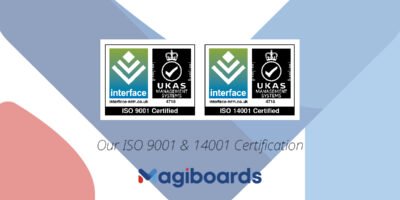A3 Problem Solving Templates Explained
So, you understand Problem Solving, but are you happy with your
implementation and outcomes? What is the best way to carry out effective A3
problem solving?
Are you someone who takes the ‘plunging-in bias’ route before fully
understanding the problem? Are you thinking about how best to solve a
problem before defining the problem itself?
The first part of any A3 Problem solving is the Planning. Why do we give so
much importance to the planning stage? It is essential to dig deep into a
problem area and to fully understand the root cause or causes for you to be
able to make any long-lasting improvements.
The Lean A3 problem solving method
The ultimate solution to this problem is the Lean A3 problem solving method.
It is a powerful set of Lean templates strategically compiled to analyse and
solve problems.
The methodology helps you to:
- Define a problem
- Gain an overview of the issues contributing to a problem
- Find the route causes of individual problems
- Set specific, targeted goals to reach your ‘desired state’.
- Review progress
- Go back and re-do until the problem is fully solved
The A3 problem solving is backed by the PDCA (Plan, Do, Check and Act)
method which allows for continuous improvements. It is a cyclical method
which is very future-oriented. The fundamental principle is iteration, and the
cycle goes round and round.

The planning stage helps you answer the questions:
- Where are you now?
- Where do you want to be in the future?
- How are you going to get there?
Humans see what they want to see, and their perceptions vary. When working
in a team without an accurate, systemic, and agreed-upon picture of the
current state, how can you expect to make better informed, more creative, or
more impactful decisions around the desired future state? Just as with any
journey, your team needs a compelling road map to get you to your desired
future state.
The Background Template
The Background template sets the problem-solving activity rolling by helping
the team gain an understanding of the context of the problem and describe its
history and nature. It establishes its significance and the need for taking it up
seriously.
Understanding the background allows you to
- Define the current process
- Understand how the process works currently.
The Current Condition Template
The second Current condition template helps define the current state in a
step-by-step list of the current process and identifies anything that is not
considered as value by the customer. These are referred to as the eight deadly
Lean wastes.
The SMART Goals template
Often teams set vision statements that they lose sight of as time passes. The
primary reason for this is because the goals set were not achievable and
grounded in real possibilities. The SMART goals template eliminates many
limitations of regular goal-oriented activities and several studies have proven
that individuals who are provided with specific, difficult, but attainable, goals,
perform better than those given easy, non-specific goals or no goals at all. Also,
it is important to understand that time bound goal setting is a must.
Root cause analysis – a retrospective approach to error analysis, is a valuable
team building exercise. Both the Fishbone template and the 5 Why’s template
are part of the root cause analysis exercise.
The Fishbone Template
The Fishbone template gives you an opportunity to get to the root cause of
the issues and figure out the actual reasons why this is happening. The
elimination of the root causes paves the way to reach your desired state. Do
not fall into the trap of starting with the Fishbone analysis. The time spent
understanding the background current condition can change your entire
perception about the problem.

The 5 why’s analysis template
Each of the root causes identified in the Fishbone analysis will be picked up
and prioritised in the 5 Why’s Analysis template. You should use this to get to
the actual reasons why each of these problems have occurred in the first place.
This structured and process-focused framework approach gives the best
results.

The A3 problem solving is designed to define underlying problems, identify
countermeasures, and create a change for the better. The challenge lies in not
defining a solution but in the execution.
The next three templates enable you to:
- Define your target conditions
- Implement counter measures to allow you to reach your target
conditions - Check to see if everything is on track
The Do Template
The ‘Do’ template is where you define the counter measures needed to
eliminate the problems. Responsibilities are assigned and target dates set. The
other vital aspects are prioritization of issues and sequencing: doing things in
the right order. This is essential for delivering an effective action planning, a
process that guides the day-to-day activities towards reaching milestones.
The Check Template
How can I monitor my progress? The Check template allows you to review
your implementation and to track your key target dates and milestones. These
milestones are critical points in your future state trajectory. During the check
stage, any deviations from course of action and established targets should be
tracked and evaluated.
The Act Template
The final Act template provides you with an opportunity to make changes if
things did not go to plan, and alternatively, to bring your countermeasures into
standard practice to prevent the problems from reoccurring. This gives you an
opportunity to reflect and highlight any variances between the plan and the
actual which is a vital part of lessons learnt documentation.
So, how do I start my A3 Problem Solving?
- Form the team.
- Introduce the fundamentals of A3 Thinking and why it is an important part of Lean management.
- Explain each of the eight steps of A3 Thinking.
- Explain the relationship between A3 Thinking and the PDCA cycle.
- Start the process of filling out the templates.
Visual goal-setting tools enable you to:
- Engage in collaborative problem solving.
- Monitor and track progress.
- Visualise goals.
- Save time getting to your desired state.
Magiboards has a range of standard and customised printed boards sold under
the Lean VM brand.
View A3 Problem solving standard templates here
I need a custom printed whiteboard option

 Magiboards USA
Magiboards USA

